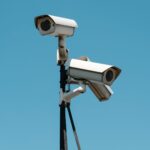ANPR cameras are an advanced security technology that uses cameras to capture and identify number plates on vehicles. They are used for monitoring and controlling access to restricted areas, as well as for collecting data for traffic and law enforcement purposes. This powerful technology can help to improve security, reduce traffic congestion, and keep roads safer.
The demand for Automatic Number Plate Recognition (ANPR) cameras in the UK has been increasing in recent years due to their ability to help law enforcement and local authorities better monitor and enforce traffic regulations.
These cameras are used to automatically capture the registration plate of vehicles and link them to an individual or organisation, allowing authorities to quickly identify vehicles that are stolen, uninsured, or even involved in serious crimes.
The number of ANPR cameras deployed in the UK has been steadily increasing since the early 2000s, and there are now estimated to be over 25,000 cameras in operation.
The advent of numerous government-funded initiatives aimed at enhancing road safety has also contributed to this rise in demand, which has been driven in part by increased demand from local governments and law enforcement organisations.
If you are a CCTV installer looking to stay up–to–date with the latest technology, knowledge of ANPR systems is essential. This article provides a detailed explanation of how an ANPR system operates and how to install one correctly. With the increasing demand for installers with specialised skills in ANPR systems, understanding and mastering the latest security systems is essential for success.
What is an ANPR camera?
To get a better grasp of Automatic Number Plate Recognition (ANPR), it‘s important to understand the components of the system. These include a camera, a recorder, and a database. When a vehicle drives past an ANPR CCTV camera, the camera captures an image that is stored and checked against a database. Based on the results, different actions may be taken, such as generating an alert to the user, closing a barrier, disabling a device, and more.
We will now look into each of the components and see how they differ from a conventional CCTV system.
ANPR Camera
There are many things to consider in capturing a moving vehicle, for example your camera should have enough frames per second to capture a fast moving vehicle, light reflection from vehicle’s headlight should not obstruct the camera from capturing the image, the correct lens size should be used to capture a number plate clearly, correct illumination levels are used, correct positioning of the camera and so on.
There are many specialised CCTV cameras available for an ANPR application; these cameras are not the same price tag as normal CCTV outdoor cameras. However, they are most effective in capturing the number plate.
How does it compare number plates against a database?
Most of us puzzle that how an image captured by a CCTV camera is compared with a database. When an image is captured it will be converted in to binary or machine language using optical character recognition. In optical character recognition, ASCII will be used to covert a character to binary.
If you want to convert letter c (lower case) to binary, it will be converted to 01100011.
When a vehicle approaches, the camera takes number of pictures of the number plate and selects the best one to store, please note that there are many types of ANPR software’s in the market and they may deploy a different technique, for example one picture of the car plate and so on.
What is RETRO-REFLECTIVE?
Flexible retro-reflective material is constructed by hundreds of retro-reflective glass beads which will collect the light and bounce back to the same source. It helps to see the object clearly even in dark environments, pretty much like your HV vest. Most number plates in Europe and the rest of the world uses the same technology.
In summary you have to understand all components involved in an ANPR system to deliver an effective system to your customer, remember that an unsatisfied customer means an unpaid invoice.
I wish you all the best with your CCTV installation projects. Please check our new training courses and latest news in security equipment’s installation by subscribing to our mailing list.

